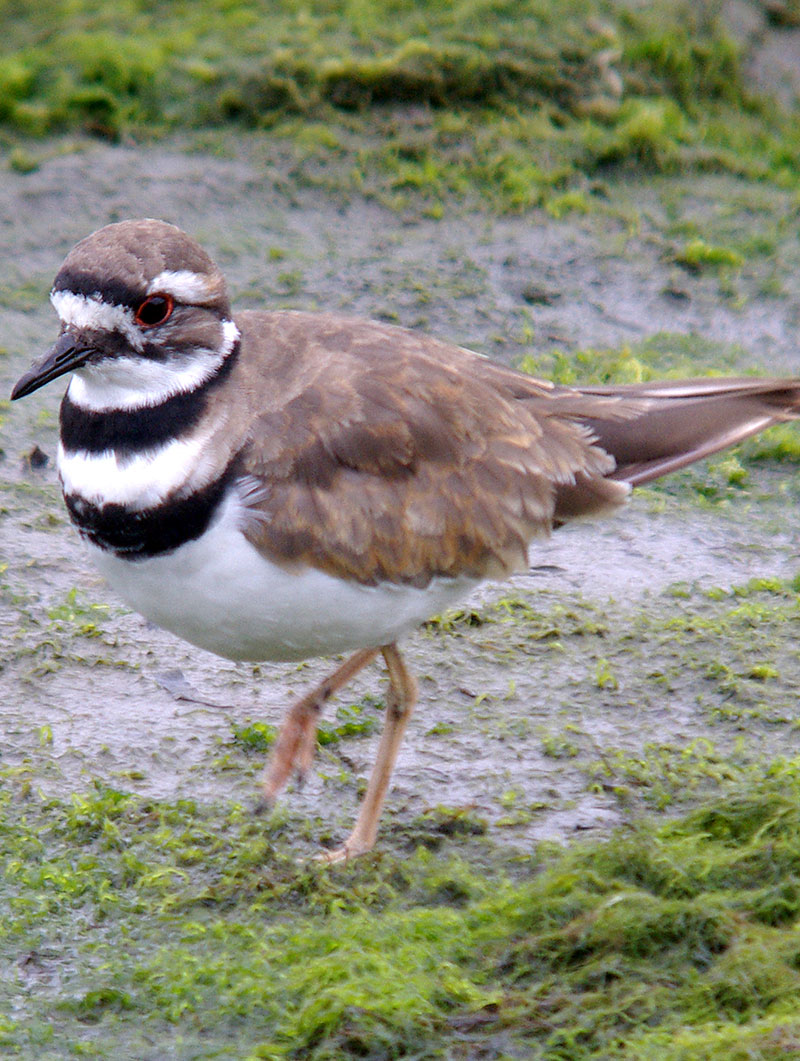Killdeer
Charadrius vociferus
Description:
A Killdeer is a large plover with a brown back and white breast and belly, and orange feathers on the rump which can typically only be seen when the bird is in flight. It has two black stripes across the chest. Its face contains brown, black, and white patches. Males and females are similar in appearance.
Size:
Killdeer are 8-11 inches (20-28 cm) long and weigh 2.6-4.5 ounces (75-128 g).
Adaptations:
- The killdeer’s long legs make it well-adapted for running on the ground. Killdeer spend relatively little time in the air compared to other birds.
- A killdeer has a long, strong beak which helps it to probe the ground for insects.
Diet:
In the wild, killdeer eat small invertebrates such as worms, insects, and snails. At Cosley Zoo, the killdeer is fed a commercial insectivore (insect-eater) diet, crickets, mealworms, birdseed, fruits, and vegetables.
Reproduction:
Killdeer nest in shallow depressions in the ground. The female lays 4-6 tan-colored eggs per clutch (group of eggs). The eggs have a speckled coloring which helps them blend in with dirt and pebbles on the ground and makes them difficult for a predator to find. The eggs hatch after 22-28 days of incubation.
Shelter and space needs:
As a ground-dwelling bird, the killdeer prefers open space with minimal vegetation, which may include lawns, driveways, parking lots, golf courses, and open fields. Killdeer can be found throughout Illinois. Killdeer which summer in northern Illinois typically migrate further south during the winter months.
Life expectancy:
The oldest known killdeer was over 10 years old.
Relationship with man:
Killdeer thrive in habitats which have been modified by humans. However, this also puts them in higher danger of being hit by cars or flying into buildings. Killdeer consume many pest species, which makes them especially useful to farmers.
Fun Facts:
- The Killdeer gets its name because of the call that it makes, which sounds like “Kill-deer”.
- Killdeer employ two different methods of protecting their nests, which are located in a vulnerable position on the ground. If an animal or human is close to stepping on a nest, the killdeer will fluff up its body and run directly towards the other animal to stop it. If a killdeer spots a predator from afar, the killdeer will sneak away from the nest and then employ the “broken wing” strategy, in which the bird will make noise and drag its wing as if it is hurt. The killdeer lures the predator away from the nest in this manner, and then flies away unharmed before the predator can catch it.






